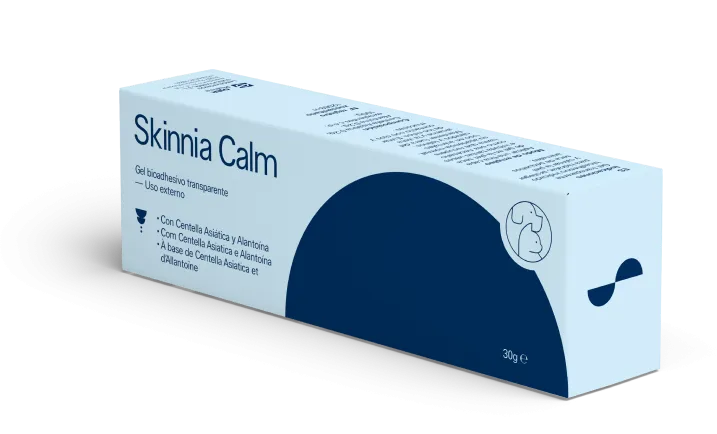PATHOLOGIES WE TREAT
Solar dermatitis

Introduction
Solar dermatitis is an inflammation of the skin caused by prolonged sun exposure without adequate protection. It primarily affects areas with little to no hair, such as the nose, ears, abdomen, and back, particularly in pets that spend time outdoors. Light-skinned dogs, such as Bulldogs and Dalmatians, and hairless cats, like the Sphynx, are especially susceptible to solar dermatitis.
Symptoms
The severity of solar dermatitis symptoms depends on the duration of sun exposure and the pet’s skin type. Common symptoms include:
- Redness of the skin: The affected area appears red and inflamed, similar to human sunburn.
- Crusting or ulcers: In severe cases, the skin may develop crusts or ulcers, causing significant discomfort.
- Itching and discomfort: Pets may excessively scratch or lick the irritated areas, exacerbating the condition.
- Hair loss (alopecia): Hair may fall out in exposed areas due to sun damage.
Diagnosis
Diagnosis typically involves a review of the pet’s sun exposure history and a physical examination of the affected areas. In some cases, additional tests may be conducted to rule out other skin conditions.
Treatment
Treatment focuses on alleviating symptoms and preventing further damage:
- Anti-inflammatory medications: Prescribed by veterinarians to reduce inflammation and pain.
- Topical soothing products: Hydrating products like Skinnia Calm are effective in calming irritated skin and promoting healing.
- Sun protection: Essential to prevent recurrence, including the use of pet-safe sunscreens and minimizing sun exposure during peak radiation hours. In severe cases, protective clothing or ensuring access to shaded areas is recommended.
Prevention
Preventing solar dermatitis involves minimizing sun exposure and protecting vulnerable areas:
- Avoid peak sun hours: Limit outdoor activities during intense sunlight (9:00 a.m. to 3:00 p.m.).
- Use pet-specific sunscreen: Apply to sensitive areas, such as the nose, ears, and abdomen, before outdoor activities.
- Provide shade and fresh water: Ensure pets have access to shaded areas and hydration while outdoors.
Scarff, D. (2017). Solar (actinic) dermatoses in the dog and cat. Companion Animal, 22(4), 188-196.
Scott, D. W., Miller, W. H., & Griffin, C. E. (2001). Muller and Kirk's Small Animal Dermatology (6th ed.). Elsevier.
Burrows, A. (2012). Actinic (solar) dermatoses. In BSAVA Manual of Canine and Feline Dermatology (pp. 235-242). BSAVA Library.
Scarff, D. (2007). Solar dermatoses in companion animals Part 1: Canine solar dermatoses. UK Vet Companion Animal, 12(3), 47-53.

Bioadhesive transparent gel indicated to moisturise, protect and soothe the dry skin of small animals.